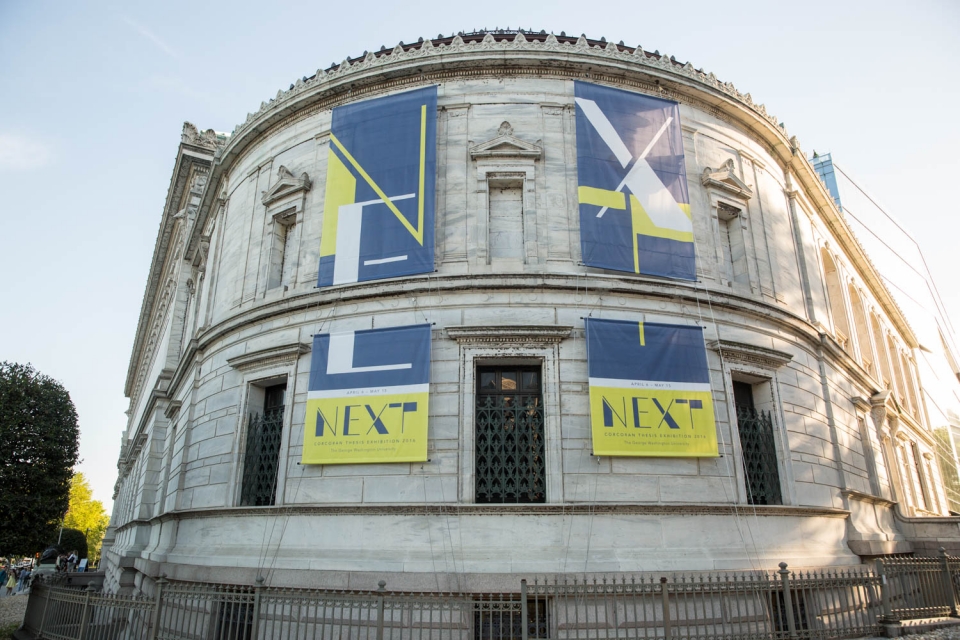Corcoran School of the Arts and Design students returning this fall can expect to see improvements to the Flagg Building.
Summer work at the building, which has been closed since mid-May, has primarily been focused on enhancing the building’s safety compliance and ensuring that the building meets standards defined by the Americans with Disabilities Act (ADA).
These renovations include fundamental life safety, mechanical, electrical and plumbing upgrades and are the initial part of a multiyear phase of renovations expected to extend through 2018.
Other renovations taking place over the summer include work in the sub-basement, basement and first floor.
In the sub-basement, crews removed decades’ worth of building materials, furniture and equipment in order to make room for and install plumbing and electrical and mechanical equipment. Beginning in the fall, the school will be soliciting student proposals for projects that repurpose these surplus materials.
The staircases serving the sub-basement and the old Clark elevator are being replaced with a new wider, code-compliant staircase and a new ADA-accessible elevator. In addition, new sprinkler and fire systems are being installed in the metal and wood shops.
A newly expanded and naturally lit painting and drawing studio in the basement will be ready for the fall semester. Behind the new painting and drawing space are two new general-purpose classrooms that will house Museum Studies classes as well as some of the seminar sections of Corcoran studio classes and future design programs. A new wheel studio is also under construction in the basement.
The building’s historic entry doors were removed in mid-July and sent to a specialty metal shop in Alabama where they will be refurbished. Restoring the hinges and re-mounting the doors will also ensure that they are able to support daily use for years to come.
The first-floor New York Avenue entrance is currently being restored, and a new ramp will allow for ADA-compliant access to Hammer Auditorium and to the Atrium. New ramps were also placed throughout the first floor to provide greater accessibility to the rest of the building.
To ensure the Flagg Building has a sufficient number of bathroom fixtures for its future capacity, the first-floor and the basement bathrooms are being expanded.
Darkroom studios, shifted to Smith Hall, are receiving upgrades as well. Sinks and equipment are being replaced and upgraded. Ventilation will be overhauled to ensure a safe studio environment. Future plans call for further expansion of these darkrooms to support the photography program.
Given the building’s age and historic designation, some renovations are taking longer than anticipated.
“As you can imagine, large-scale renovations rarely go as planned and working on a 120-year-old building that is on the National Register of Historic Places adds complexity to this project,” said Sanjit Sethi, director of the Corcoran School. “With this in mind, there have been unanticipated delays as to what we had hoped to accomplish by the start of the fall 2016 semester.”
Some of the areas most affected include sculpture facilities and general access to the sub-basement. Construction crews are working 10-hour shifts six days a week in order to complete as much work as possible, he said.
For at least the first three weeks of school, sculpture classes will meet in Smith Hall with students having access to the metal fabrication shop in the Science and Engineering Hall.
“This building is going to get the attention it deserves, and we are committed to improving students’ experiences,” said Mr. Sethi.
Over the next two years, design-oriented classrooms will be added to the second floor with a focus on creating learning space that is flexible, soundproof and equipped with the latest in technology. These spaces will house the school’s existing design programs as well as several new programs in design fields.
Future phases of renovations will focus on developing more innovative classroom, student and faculty space that preserves the Flagg Building’s history and meets the needs of an innovative arts education. Among the preliminary plans is an overhaul of the building’s lower level to create a central creative area with student studios, achieving the original architect’s vision for the space.
Opened in 1897, the Flagg Building received D.C. historic landmark status in 1964 and was listed in the National Register of Historic Places in 1971. The D.C. Historic Preservation Review Board designated most of the building’s interior historic last year.
Architect Leo A Daly is leading design of the renovations, and Whiting-Turning is serving as construction manager.


